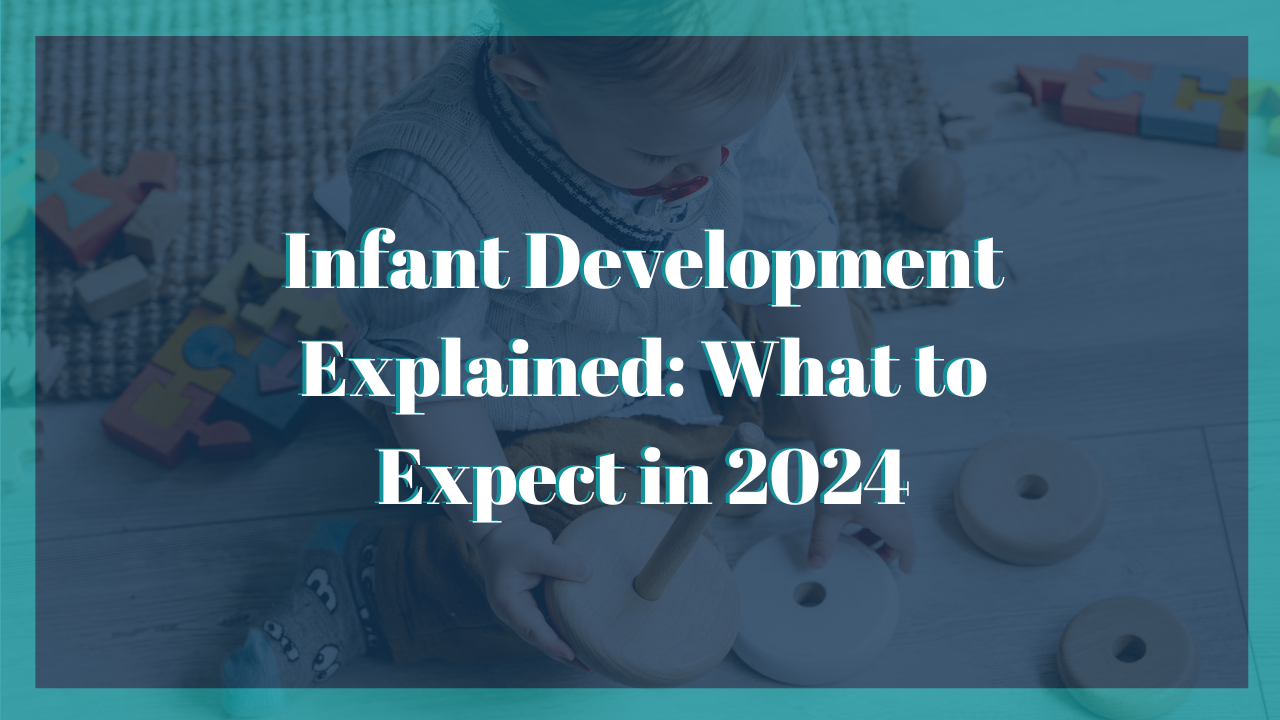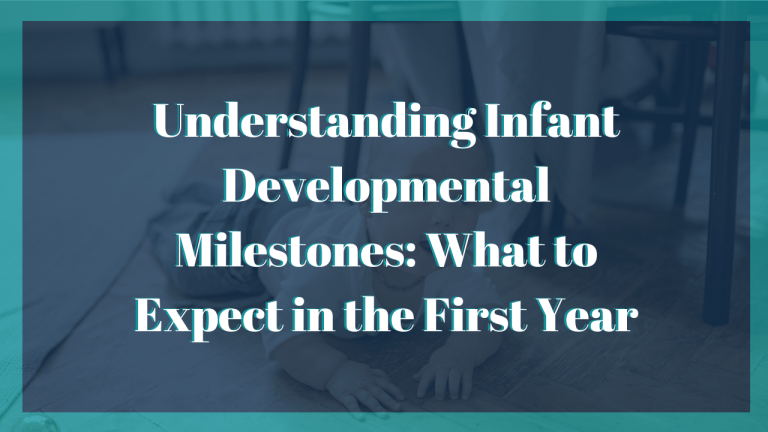Infant Development Explained: What to Expect in 2024
Welcoming a new baby into the world is an exhilarating journey! Infant development encompasses a wide array of milestones and transformations. Did you know that by age one, most infants will have tripled their birth weight? Amazing, right? In this comprehensive guide, we will explore the fascinating stages of infant development, offering insights and tips to help you support your little one’s growth and development.
Understanding Infant Development
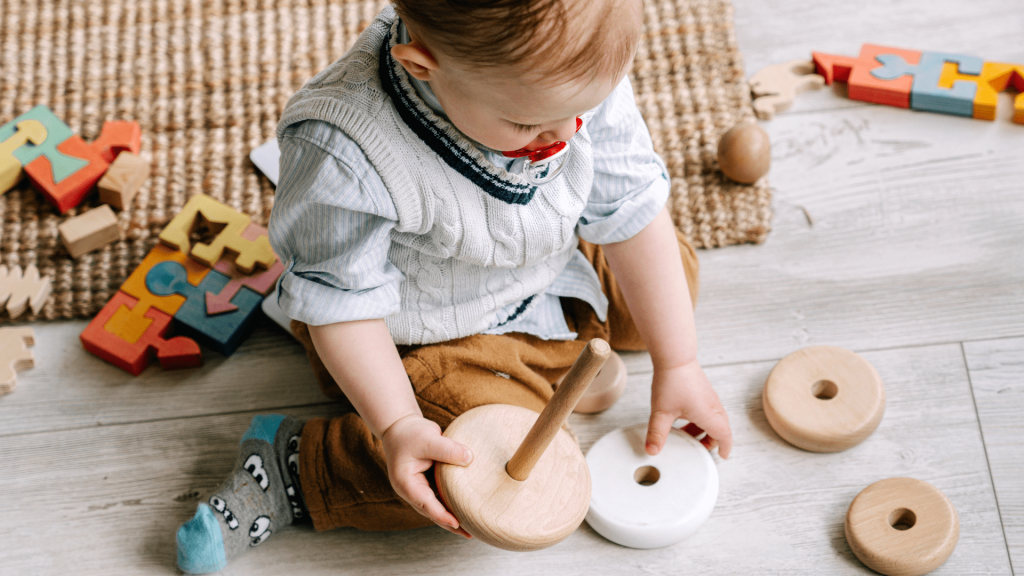
Infant development refers to the physical, cognitive, social, and emotional changes that occur from birth to age one. This period is crucial as it lays the foundation for a child’s future growth and learning. Understanding these early stages can help parents and caregivers provide the necessary support and environment for their baby’s optimal development. Knowing what to expect can also ease concerns about whether an infant reaches their developmental milestones on time.
Overview of Developmental Stages
Infant development is typically divided into several key stages. In the first month, newborns begin to adapt to their surroundings, primarily through sensory experiences. By three months, babies start to develop motor skills like lifting their heads and grasping objects. Around six months, infants often begin to sit up, respond to their names, and show early signs of communication, such as babbling. By their first birthday, many babies are crawling, standing, and may even take their first steps. They also start to develop basic cognitive skills like object permanence and social skills such as waving goodbye. Understanding these stages helps in recognizing the typical progression of development and identifying any potential delays early.
Factors Influencing Infant Growth
Several factors can influence an infant’s growth and development. Genetics plays a significant role, in determining traits such as physical appearance and potential for certain developmental milestones. Nutrition is another critical factor; a balanced diet, whether through breastfeeding or formula, provides the essential nutrients needed for growth. Environmental factors, including a safe and stimulating home environment, also significantly impact development. Interaction with caregivers is crucial for emotional and social development, as responsive and affectionate care fosters a sense of security and helps infants form healthy attachments.
The Role of Early Intervention
Early intervention can be vital if there are concerns about an infant’s development. Recognizing and addressing developmental delays early can significantly improve outcomes. For instance, physical therapy can help infants with motor delays, while speech therapy can support those with communication challenges. Regular pediatric check-ups are essential for monitoring an infant’s growth and development, providing opportunities for early identification and management of potential issues. Parents and caregivers should feel empowered to seek professional advice if they notice any signs of delay or have concerns about their baby’s progress.
Understanding infant development is key to supporting a child’s growth during these formative months. By knowing what to expect and how to encourage development, parents and caregivers can create a nurturing environment that promotes healthy physical, cognitive, social, and emotional growth. This foundational knowledge not only aids in the well-being of the infant but also sets the stage for their future success.
Physical Development Milestones
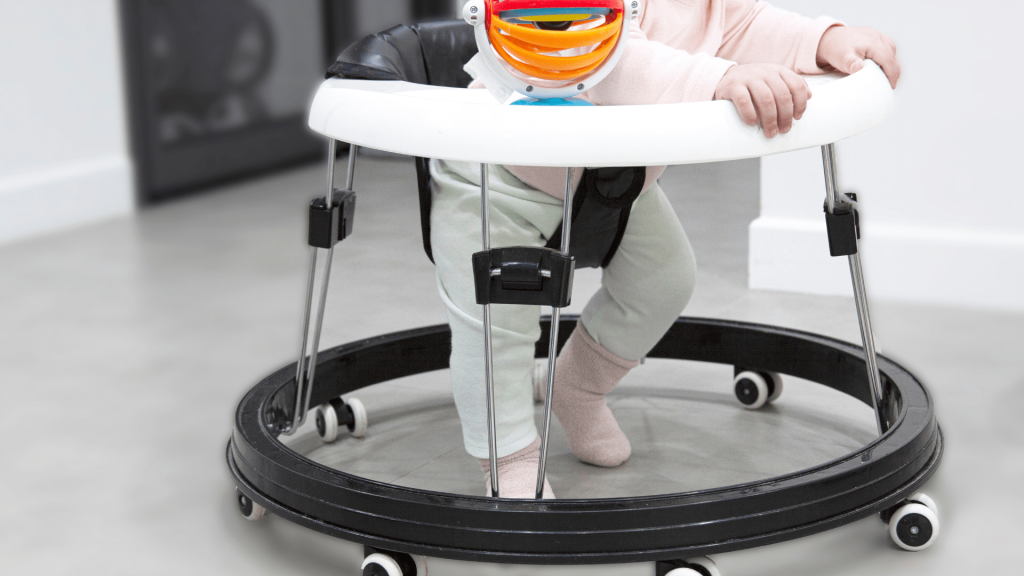
From birth, infants begin a journey of rapid physical development, hitting several critical milestones along the way. One of the first major milestones is rolling over, usually occurring around four to six months. This movement marks an important step in motor skills development, as it requires strength and coordination. As infants grow stronger, they typically start sitting up without support between six to eight months. This milestone is crucial for their independence and allows them to interact more with their environment.
Crawling often follows, usually around seven to ten months. This stage is significant for an infant’s physical development as it strengthens their muscles and enhances their coordination. Finally, the much-anticipated milestone of walking usually happens around the one-year mark. Initially, infants may stand while holding onto furniture (cruising) before taking their first independent steps. Walking opens up a whole new world of exploration and development opportunities for the infant.
Timeline of Physical Development
Understanding the typical timeline of physical development can help parents and caregivers monitor their infant’s progress and identify any potential concerns early on. In the first three months, infants primarily develop neck and upper body strength, enabling them to lift their heads while lying on their stomachs. By six months, they often begin to sit with minimal support and can roll over from front to back and vice versa.
Between six and nine months, most babies start to crawl, move objects from one hand to another, and may begin to pull themselves up to a standing position. By their first birthday, many infants are cruising along furniture and may take their first steps independently. Each baby is unique, and there can be a wide range in the timing of these milestones. Regular pediatric check-ups can ensure that the baby’s physical development is on track and help address any delays early.
Tips for Encouraging Physical Growth
Parents and caregivers play a crucial role in supporting and encouraging an infant’s physical development. One effective way is through “tummy time,” where babies spend time on their stomachs while awake and supervised. This activity helps strengthen the neck, shoulder, and arm muscles, which are essential for rolling over and crawling. Providing a safe and stimulating environment with plenty of space for movement and exploration also promotes physical growth.
Using toys and objects that encourage reaching, grasping, and pulling can support fine motor skills development. Additionally, offering hands-on support, such as holding the baby’s hands while they practice standing or walking, can boost their confidence and muscle strength. Regular playtime, interaction, and positive reinforcement from caregivers are key to fostering a baby’s physical milestones.
Physical development is a foundational aspect of an infant’s overall growth, impacting their ability to interact with the world around them. By understanding and supporting these milestones, parents and caregivers can ensure their baby is developing healthily and happily.
Cognitive Development in Infants
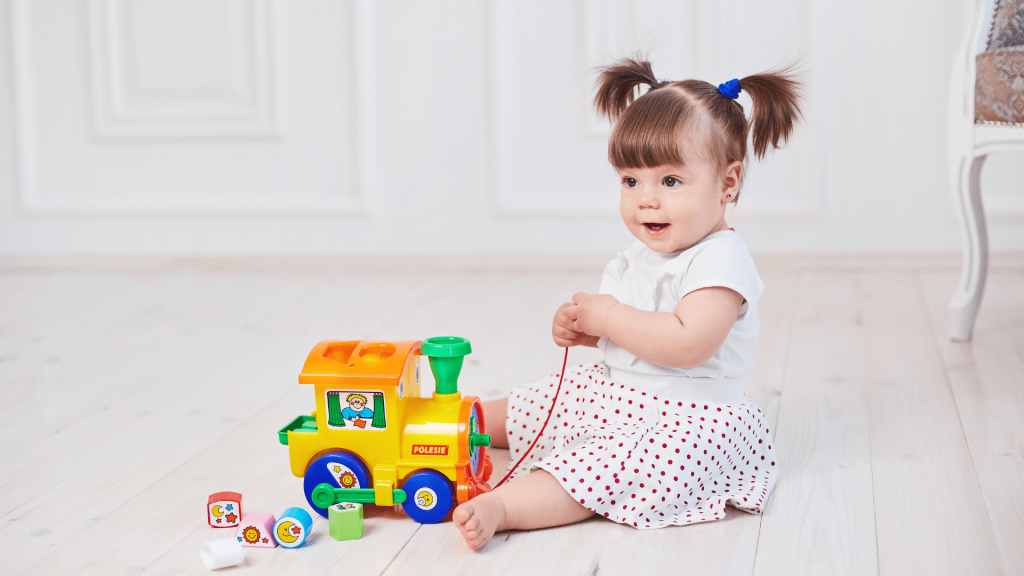
Cognitive development in infants involves the progression of thinking, learning, and understanding the world around them. This aspect of development begins at birth and continues rapidly throughout the first year of life. In the early stages, infants rely heavily on their senses to make sense of their surroundings. They observe, listen, and touch, gradually learning to recognize familiar faces, sounds, and objects. As they grow, their cognitive abilities expand, allowing them to understand cause and effect, develop problem-solving skills, and build memory.
During the first few months, cognitive development is closely tied to sensory and motor experiences. For example, an infant may start to grasp objects intentionally or follow a moving object with their eyes. By six months, babies often show interest in exploring objects by touching and mouthing them, which is a crucial part of their learning process. As they approach their first birthday, infants begin to understand simple instructions, recognize their names, and may even start to imitate sounds and actions, indicating the development of more complex cognitive skills.
Important Cognitive Milestones (Object Permanence, Cause and Effect)
One of the most significant cognitive milestones in infancy is the development of object permanence, typically emerging around 8 to 12 months. Object permanence is the understanding that objects continue to exist even when they are out of sight. This concept is fundamental as it forms the basis for memory and more advanced problem-solving skills. For instance, an infant who has developed object permanence will look for a toy that has been hidden under a blanket, knowing that it still exists even though they can no longer see it.
Another critical milestone in cognitive development is understanding cause and effect. This concept begins to develop around six to nine months of age. Infants learn that their actions can cause certain outcomes, such as shaking a rattle to make noise or dropping a toy to see where it lands. These early experiments with cause and effect are essential building blocks for later learning and reasoning. As infants continue to explore and interact with their environment, they gain a deeper understanding of how things work, which fosters their intellectual growth.
Activities to Boost Cognitive Skills
There are numerous ways parents and caregivers can support and enhance an infant’s cognitive development. Engaging in playtime activities that stimulate thinking and exploration is one of the most effective methods. For example, playing peek-a-boo helps reinforce the concept of object permanence, while providing toys that respond to actions (like rattles or musical instruments) can help infants grasp cause and effect. Simple games that involve hiding and finding objects also encourage problem-solving and memory skills.
Reading to infants is another powerful tool for boosting cognitive development. Even before they can understand words, listening to the rhythm and intonation of language helps them develop listening skills and a foundation for later language acquisition. Interactive books with textures, flaps, or mirrors can further engage an infant’s curiosity and promote sensory learning. Additionally, talking to babies about what you’re doing, naming objects, and describing actions can significantly enhance their understanding of language and the world around them.
Finally, ensuring a rich and varied environment with plenty of opportunities for exploration is key to fostering cognitive growth. Providing safe spaces for infants to move, explore, and interact with different objects helps build their curiosity and encourages independent learning. Positive reinforcement and responsive caregiving also play a critical role in supporting cognitive milestones, as they help create a secure environment where infants feel confident to explore and learn.
Cognitive development in infants is a fascinating and complex process that lays the groundwork for all future learning. By understanding these milestones and actively engaging in activities that stimulate cognitive growth, parents and caregivers can significantly contribute to their child’s intellectual development during these formative years.
Social and Emotional Development

Social and emotional development in infants is crucial for their overall well-being and future relationships. This development involves the way infants learn to express and manage emotions, form attachments, and interact with others. From birth, babies are highly sensitive to social cues and emotions, relying on their caregivers for emotional security and comfort. A strong foundation in social and emotional development helps infants build trust, empathy, and the ability to form healthy relationships later in life.
Key Social Milestones (Attachment, Smiling, Stranger Anxiety)
One of the earliest and most important social milestones is the formation of attachment, typically established within the first few months of life. Attachment refers to the emotional bond that develops between an infant and their primary caregivers, usually parents. This bond is built through consistent, responsive care, where the caregiver meets the baby’s needs for food, comfort, and affection. A secure attachment gives the infant a sense of safety, allowing them to explore the world and develop independence.
Smiling is another critical social milestone that usually appears around six to eight weeks. At first, babies smile in response to internal sensations or as a reflex, but soon, they begin to smile in response to social interactions, signaling the start of their ability to engage and communicate with others. Social smiling becomes a powerful tool for bonding and communication, as it encourages positive interactions between the infant and their caregivers.
Around six to nine months, many infants start to experience stranger anxiety, which is a common part of social development. Stranger anxiety occurs when a baby becomes wary or fearful around unfamiliar people. While it may be challenging for parents, this stage is a normal part of development, reflecting the infant’s growing awareness of their environment and the differentiation between familiar and unfamiliar faces. This anxiety typically peaks around one year and gradually diminishes as the child becomes more comfortable and confident in social situations.
Emotional Milestones and Self-Regulation
Emotional development in infants is closely tied to their ability to recognize, express, and eventually manage their emotions. In the early months, babies communicate their emotions primarily through crying, which signals their needs and discomforts. As they grow, they begin to express a wider range of emotions, including joy, surprise, anger, and frustration. By six months, many infants can distinguish between different emotional tones in their caregivers’ voices and respond accordingly, demonstrating the beginning of emotional understanding.
Self-regulation, or the ability to manage and control emotions, starts to develop in infancy but continues to mature throughout childhood. In the first year, caregivers play a crucial role in helping babies regulate their emotions by providing comfort and reassurance during distress. Over time, infants begin to learn self-soothing techniques, such as sucking their thumbs or cuddling with a blanket, which are early forms of emotional regulation. Responsive caregiving is essential in fostering healthy emotional development, as it helps infants learn to navigate their emotions and build resilience.
Activities to Promote Social and Emotional Growth
Parents and caregivers can support an infant’s social and emotional development through various activities and interactions. Consistent, responsive caregiving is the foundation of healthy development. This means being attuned to the baby’s needs, offering comfort when they’re upset, and engaging in positive interactions like cuddling, talking, and playing.
Playing face-to-face games, such as peek-a-boo, helps infants learn about social interactions and emotional expression. These games encourage babies to engage with others and develop an understanding of social cues. Reading books that feature different emotions and talking about those feelings can also help infants start to recognize and understand their emotions.
Encouraging social interaction with other babies or family members in a safe, supportive environment can help infants develop social skills and reduce stranger anxiety. Creating routines, such as bedtime rituals, also provides emotional security and predictability, which is important for an infant’s sense of stability and attachment.
Social and emotional development is a foundational aspect of an infant’s growth, influencing their ability to form relationships and manage emotions throughout life. By fostering secure attachments, encouraging positive interactions, and supporting emotional regulation, parents and caregivers can help their infants develop the social and emotional skills needed for a healthy, well-adjusted life.
Sensory Development in Infants

Sensory development in infants is the process where babies begin to experience and interpret the world through their five senses: sight, hearing, touch, taste, and smell. This development starts in the womb and continues rapidly after birth, forming the foundation for an infant’s understanding of their environment. Each sense plays a critical role in helping infants learn about their surroundings, interact with others, and build cognitive and motor skills.
At birth, some senses are more developed than others. For instance, an infant’s sense of hearing is already quite advanced, allowing them to recognize familiar voices, particularly their mother’s. In contrast, vision is less developed, with newborns initially seeing in shades of gray and only being able to focus on objects 8 to 12 inches away. As sensory development progresses, infants gain more clarity in their vision, sharpen their hearing, and begin to explore the world through touch, taste, and smell.
Visual Development in Infants
Visual development is one of the most dynamic aspects of sensory growth in the first year of life. Although newborns have limited vision, they can detect light, shapes, and movement. By the end of the first month, infants start to focus more on faces, especially their caregiver’s face, which is vital for social bonding. By two months, babies begin to track moving objects with their eyes, which is an important milestone for hand-eye coordination.
As babies grow, their color vision improves, and by four months, they can see a full range of colors. Depth perception, or the ability to judge how far away objects are, begins to develop around five to seven months, which is essential for reaching and grasping objects. Providing a visually stimulating environment with contrasting colors, varied shapes, and safe objects to look at and touch can help support this aspect of sensory development.
Auditory Development and Language Foundations
Hearing is one of the most crucial senses for language development. Even before birth, infants can hear sounds from the outside world, particularly the rhythm and tone of their mother’s voice. After birth, babies are highly attuned to voices and will often turn their heads towards sounds, especially familiar ones. This ability to recognize and differentiate between sounds is foundational for later language development.
During the first few months, infants are particularly responsive to high-pitched, melodic voices, often referred to as “parentese” or baby talk. This type of speech naturally captures their attention and helps them begin to distinguish the sounds of language. By six months, babies start to recognize the sounds of their native language and may even begin to babble, experimenting with different sounds and syllables. Engaging in regular conversations, singing, and reading aloud are excellent ways to support auditory development and lay the groundwork for language acquisition.
Development of Touch, Taste, and Smell
The senses of touch, taste, and smell are deeply interconnected and play a significant role in how infants explore and learn about the world. Touch is the earliest sense to develop, and it remains one of the most important for bonding and emotional security. From the comforting feel of a caregiver’s touch to the textures of toys and blankets, touch helps babies learn about their environment and themselves. Skin-to-skin contact, often practiced right after birth, is particularly crucial for emotional bonding and can help regulate an infant’s heart rate and temperature.
Taste and smell are also well-developed at birth. Babies have a preference for sweet tastes, which is why they are naturally drawn to breast milk. As they begin to explore solid foods around six months, their taste preferences will start to expand, though they might show a natural aversion to bitter tastes, which is thought to be an evolutionary response to avoid potentially harmful substances. Smell is closely linked to taste, and infants can recognize the scent of their mother’s milk, which helps in the feeding process.
Providing varied sensory experiences, such as offering different textures to touch, safe objects to explore, and diverse foods to taste (as they grow older), can greatly enhance sensory development. These experiences help infants build a richer understanding of their world and develop preferences and aversions that will influence their interactions and learning.
Activities to Enhance Sensory Development
There are numerous activities that parents and caregivers can engage in to promote healthy sensory development. For visual development, offering brightly colored toys, mobiles, and picture books can stimulate an infant’s sight. Playing peek-a-boo and other visual tracking games can also help strengthen their eye muscles and improve focus.
For auditory development, talking, reading, and singing to your baby daily is essential. Exposing them to a variety of sounds, from music to the everyday noises of your household, helps sharpen their hearing and prepares them for language learning.
To support the development of touch, parents can provide a variety of textured toys and materials for babies to explore. Gentle massages and plenty of skin-to-skin contact are also beneficial for emotional bonding and sensory growth. As for taste and smell, introducing different flavors and scents as the baby begins solid foods can expand their sensory experiences and help them develop a more varied palate.
Sensory development is a critical component of an infant’s overall growth, influencing everything from motor skills to emotional bonding and cognitive development. By understanding the progression of sensory milestones and actively engaging in activities that stimulate each sense, parents and caregivers can support their baby’s journey toward a rich and vibrant understanding of the world.
Common Challenges in Infant Development

Delayed Developmental Milestones
One of the most common challenges in infant development is delayed achievement of developmental milestones. While every infant grows at their own pace, significant delays in areas such as motor skills, speech, or social interactions can be concerning. For example, a baby who isn’t sitting up by nine months or who isn’t babbling by twelve months might be experiencing developmental delays. These delays can be caused by a variety of factors, including premature birth, genetic conditions, or environmental influences. It’s important for parents to monitor their infant’s progress and consult with a pediatrician if they notice any concerning signs. Early intervention can often help address delays and support the child’s development.
Feeding Difficulties
Feeding difficulties are another common challenge during infancy. Whether breastfeeding, bottle-feeding, or transitioning to solids, some infants struggle with feeding, which can impact their growth and development. Issues such as difficulty latching, slow weight gain, or allergies to formula can cause stress for both the infant and the parents. For babies with feeding issues, it’s crucial to work closely with healthcare professionals, such as lactation consultants or pediatric dietitians, to identify the problem and find solutions. Introducing new foods gradually and watching for any allergic reactions can also help ensure a smoother transition to solid foods.
Sleep Issues and Patterns
Sleep issues are a significant concern for many parents and are a common challenge in infant development. Newborns and infants often have irregular sleep patterns, which can lead to frequent nighttime waking, difficulty settling down, and overall sleep deprivation for the family. Common sleep-related challenges include establishing a consistent sleep routine, managing sleep regressions, and addressing conditions like colic, which can disrupt an infant’s sleep. Understanding that sleep patterns vary widely among infants and implementing strategies like creating a calming bedtime routine or using white noise can help improve sleep quality for both the baby and parents. Persistent sleep issues should be discussed with a pediatrician to rule out underlying health concerns.
Behavioral and Emotional Concerns
Behavioral and emotional challenges can also arise during infancy, often reflecting an infant’s response to their environment and the challenges of early development. For instance, excessive crying, often referred to as colic, is a common issue that can cause distress for both the infant and parents. Colic usually peaks around six weeks and may be associated with digestive discomfort or sensitivity to stimuli. Additionally, some infants may exhibit heightened anxiety, such as stranger anxiety, which is a normal developmental stage but can be particularly intense for some babies.
Managing these emotional challenges involves creating a calm, supportive environment and being responsive to the infant’s needs. This might include holding and comforting the baby during periods of distress, minimizing exposure to overstimulation, and gradually introducing the infant to new people and environments to reduce anxiety. If behavioral or emotional concerns persist or seem severe, it’s advisable to seek guidance from a pediatrician or child development specialist.
Health-Related Challenges
Health-related challenges, such as frequent illnesses or congenital conditions, can significantly impact an infant’s development. Infants are particularly vulnerable to infections like colds, ear infections, and respiratory illnesses, which can disrupt their daily routines and developmental progress. Additionally, conditions like jaundice, reflux, or congenital heart defects require careful management and monitoring to ensure they do not hinder the infant’s growth and development.
Regular pediatric check-ups, vaccinations, and maintaining a healthy environment can help mitigate some of these health challenges. Early diagnosis and treatment of any health issues are critical to supporting the infant’s overall development. Parents should also be informed about common infant health concerns and know when to seek medical advice to address potential problems promptly.
Supporting Infant Development Amidst Challenges
Navigating the challenges of infant development requires patience, observation, and a proactive approach. Parents and caregivers play a pivotal role in identifying and addressing any issues that may arise during this crucial stage of life. It’s important to remember that while challenges like developmental delays, feeding difficulties, and sleep issues are common, they are often manageable with the right support and interventions.
Parents should feel empowered to seek advice from healthcare providers, join support groups, and access resources designed to help them understand and address the complexities of infant development. Early intervention, consistent care, and a nurturing environment can help infants overcome these challenges and continue on a healthy developmental path.
Supporting Your Infant’s Development
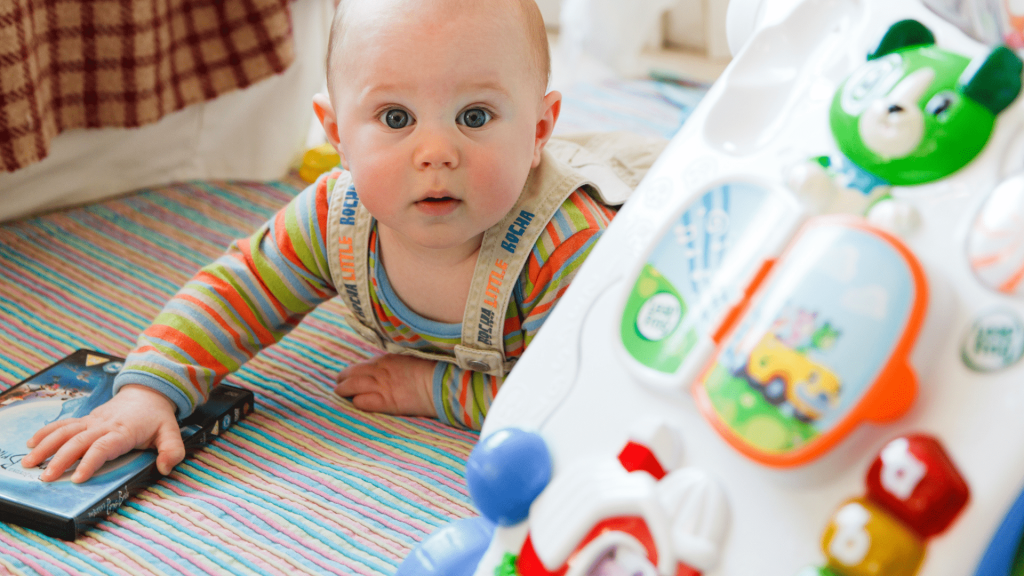
Creating a Stimulating Environment
One of the most effective ways to support your infant’s development is by creating a stimulating environment that encourages exploration and learning. Babies are naturally curious, and they learn best when they have access to a variety of sensory experiences. This can be achieved by providing age-appropriate toys that stimulate different senses, such as brightly colored objects for visual development, soft toys for tactile exploration, and musical toys for auditory stimulation.
Engaging in activities like reading aloud, singing, and playing peek-a-boo also contributes to cognitive and language development. These interactions not only help build your baby’s vocabulary but also strengthen the bond between you and your child. It’s important to regularly rotate toys and introduce new objects to keep your baby engaged and challenged, which promotes continuous learning and development.
Encouraging Physical Activity
Physical activity is crucial for your infant’s motor development, helping them to build strength, coordination, and balance. Tummy time is one of the most recommended activities for young infants, as it helps them develop neck and shoulder muscles while also preventing flat spots on the head. As your baby grows, encourage them to reach for toys, roll over, and eventually crawl, which are all important milestones in physical development.
Creating a safe space where your baby can move freely is essential. This might include a soft mat or baby gym where they can practice rolling, sitting up, and eventually standing and walking. Parents should also engage in play that involves movement, such as gently pulling your baby to a sitting position or helping them practice standing while holding onto furniture. These activities not only support physical growth but also enhance your baby’s confidence as they master new skills.
Promoting Social Interaction
Social interaction plays a vital role in your infant’s emotional and social development. From the earliest days, babies are drawn to human faces and voices, and they begin to learn social cues by observing and interacting with their caregivers. Smiling, cooing, and talking to your baby not only make them feel loved and secure but also teach them about communication and relationships.
As your baby grows, facilitating interactions with other infants and adults can further enhance their social skills. Playdates, attending baby groups, or simply spending time with family members can provide opportunities for your baby to learn how to interact with others, share, and respond to social cues. These early social experiences are the building blocks for developing empathy, cooperation, and emotional intelligence.
Supporting Cognitive Development
Cognitive development in infants is about how they learn, think, and solve problems. You can support your baby’s cognitive growth by engaging them in activities that stimulate their curiosity and problem-solving abilities. Simple games like stacking blocks, sorting shapes, and playing with puzzles can help your baby learn about cause and effect, spatial relationships, and problem-solving.
Reading to your baby from an early age is another powerful way to boost cognitive development. Books introduce your baby to new concepts, words, and ideas, expanding their understanding of the world. Additionally, allowing your baby to explore their environment safely—whether by touching different textures, hearing new sounds, or seeing new sights—helps build their cognitive skills and understanding of the world around them.
Establishing Routines and Consistency
Consistency is key in supporting your infant’s overall development. Establishing daily routines for feeding, sleeping, and playtime provides a sense of security and predictability for your baby. Regular routines help infants understand what to expect, which can reduce anxiety and help them feel more confident in their environment.
For example, having a consistent bedtime routine—such as a warm bath, followed by reading a book, and then a lullaby—can signal to your baby that it’s time to sleep, making it easier for them to settle down at night. Similarly, consistent mealtime routines can help your baby develop healthy eating habits and understand the rhythm of the day. Over time, these routines will also support your baby’s ability to self-regulate, which is an important aspect of emotional development.
Being Responsive to Your Baby’s Needs
Perhaps the most important way to support your infant’s development is by being responsive to their needs. This involves tuning into your baby’s cues and responding appropriately to their signals, whether they are hungry, tired, or seeking comfort. Responsive parenting fosters a secure attachment, which is foundational for your baby’s emotional development and well-being.
When you respond to your baby’s needs promptly and consistently, they learn that they are safe and loved, which helps them develop trust and a strong bond with you. This secure attachment is crucial for your baby’s future relationships and emotional health. It also provides the emotional stability that your baby needs to explore their environment, try new things, and develop independence.
Supporting your infant’s development is a multifaceted process that involves providing a stimulating environment, encouraging physical activity, promoting social interaction, supporting cognitive growth, establishing consistent routines, and being responsive to your baby’s needs. By engaging in these practices, you can help ensure that your baby reaches their developmental milestones and grows into a confident, capable, and emotionally secure individual.
Conclusion
Infant development is a remarkable and dynamic process, filled with joy, wonder, and sometimes challenges. By understanding the key milestones and knowing how to support your baby’s growth, you can help your little one thrive. Remember, every baby develops at their own pace, so cherish each moment and enjoy the journey! If you have any concerns or questions, don’t hesitate to reach out to a healthcare professional.

